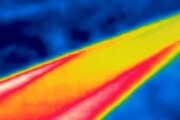DSDE: In Theory
-
The outcome of the authors’ experiments revealed that the tertiary injection of nanoparticles results in additional oil recovery beyond the limit of low-salinity water.
-
This paper describes a technique used to derive stresses for a gas-storage field and then calibrate the 1D mechanical earth model of the field.
-
The authors report that nanopolysilicon can be used effectively as a depressurizing, injection-increasing agent.
-
A well-pattern-design work flow proved able to identify substantially better patterns than the traditional approach for a giant mature field.
-
The larger data set is expected to provide critical insight for wind resource assessment in the New York Bight lease sale.
-
The authors examine a theory that low resistivity in a Chinese reservoir is caused by bound water trapped in clay minerals and develop an improved model for production prediction of offset wells.
-
The oil and gas industry can benefit from the operational insights that IT/OT convergence provides. Predictive maintenance, in particular, helps improve safety and control costs.
-
Four CEOs describe what goes into turning a world of data into a data-driven world.
-
The authors demonstrate how artificial intelligence and machine learning can help build a purely data-driven reservoir simulation model that successfully history matches dynamic variables for wells in a complex offshore field and that can be used for production forecasting.
-
The paper describes an end-to-end deep surrogate model capable of modeling field and individual-well production rates given arbitrary sequences of actions.
Trending Now on DSDE
Get JPT articles in your LinkedIn feed and stay current with oil and gas news and technology.














